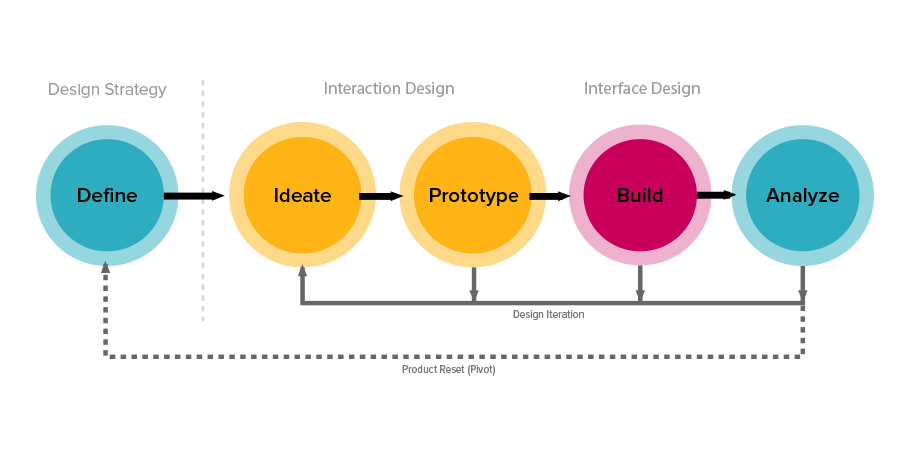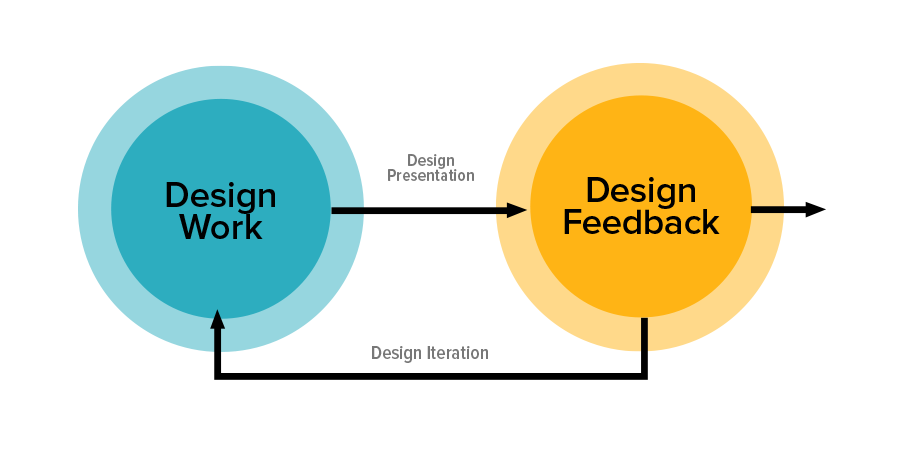Design is hot. Design executives are being tasked with being design-driven, but don't have the tools or processes to sustain this effort. They embrace design thinking, but it's unclear how their companies will embrace its ideas. VC's are telling founders to hire a design leader, but it's not clear who this mythical, unicorn person is who will drive the design approach across the company. It's entirely possible to grow this person in an organization, but not likely to be someone who comes in with magical fairy dust to make everything Apple-esque.
Design thinking is a broad term with no specific directives. It's open to a lot of interpretation. It's too big and too lofty for most businesses to embrace. Throw in a couple inexperienced designers who are students of the idea and you've got yourself a mess. Most designers don't have the authority (nor desire?) to take on all the crap necessary to change an organization to be more design-centric. That's a shame because design can truly transform the way companies solve big problems.
The Problem with Design Thinking
Design thinking has its detractors for a good reason. We've all been in lamestorming meetings looking for aha moments that suddenly produce a clear path forward. Businesses struggle to function with 'sorta' answers — they need clarity to build confidence, which can be found in spreadsheets, science and engineering. PRDs and MRDs are great for covering your ass, but won't produce a great result without a build and test model that brings in the best practices and knowledge of a cross-disciplinary group. The processes and methods of design thinking cannot easily produce the straightforward answers that businesses want, even if those same answers are not what they need.
In some ways, designers and design managers have shot themselves in the foot — design thinking neither negates nor replaces the need for smart designers doing the work. And because design thinking has many paths through parallel phases, it seems fuzzy compared to the process of creating code. Compared to analytical thinking or science, our industry still doesn't have a consensus on what design thinking means. Most designers couldn't tell you what it means.
It's been 20 years since I was ingrained with the concept that the designer mind could think much differently than a marketer, engineer or the guy in a suit-and-tie. Yet, for all its power and inspiration, I still don't completely understand the meaning of design thinking. Should we abandon the concept? Absolutely not. I use the methods and ideas that it espouses daily. I believe we just lack some of the tools necessary for the practical application of these methods to stick within organizations.
What I Know About Design Thinking
A significant portion of the term "design thinking" can be traced back to Stanford. I was fortunate to study and work with two of its biggest proponents in the Stanford product design department. Ralph Faste, who was my adviser, taught and expanded on Robert McKim's ideas as a method of creative action. David Kelly, who was an adviser and also my boss when I taught in the program, expanded the commercial opportunities through IDEO (where I also briefly worked). David went on to start the dSchool at Stanford, which has truly created an opportunity for fertile, cross-disciplinary studies.
At ZURB, we embraced design thinking very early on in our web work when most people were still trying to create digital brochures in 1998. It made for many awkward meetings and arguments with clients — some of which still happen today :). Yet, it's helped our company create an identity around problem solving by using design as a business tool. Our approach makes us ZURB. It's unique to us. However, design thinking is not a panacea for every company as many people have discovered.
Most recently you've seen us write about, "What Are You Even Designing?", "Designers, You've Made It to the Table. Don't Screw It Up" and "How Designers Do Dumb Design and Why Design Presentation is Your Deliverance." These ideas stem from our desire to seek design truth, to understand why what we do works for ZURB. Hopefully our thoughts elicit a strong reaction and a desire to also explore the fringe of design. If you've taken our class on Mastering Design Feedback, many of these ideas have been synthesized into a process. Our approach utilizes the concepts of design thinking, but it's still ZURB.
Looking for a Practical Starting Place
Design Thinking is actually less about thinking and more about doing. It's not something you have, it's something you do. With digital development life cycles moving faster than ever, it's incredibly important to put an emphasis on output. But that output needs to address the endless array of devices and contexts that come with designing products in a digital environment. At ZURB, we have a five-step process that addresses many important aspects of design thinking.

Yet, 250 startups later, our Studios group has taught us that it's not just our process that produces the magical results, it's the combination of our methods and culture that propel companies forward. Our work wasn't easily 'summed up' into a replicable design thinking process.
That left us with an opportunity. We asked ourselves, what if we could simplify and condense the most practical aspects of our process, methods and culture? Instead of defining design thinking, we've identified the core components of our work that resonated with practitioners of design work. We're excited to introduce progressive design.
Progressive Design Defined
Progressive design uses the principles of design thinking while providing a simple and robust design feedback loop that drives work forward. It places an emphasis on doing and driving work forward. Progressive design is making a lot of small decisions that together move people-centered design work forward. It's active participation and iteration with a goal. This isn't lean, or agile, or some magical customer exercise. Progressive design optimizes for results, not production sprints or a MVP product. Iterations don't need to be time-based or feature constrained. It can move fast or slow or varied. It's a user-focused approach that embraces business goals while addressing the technical feasibility.

Progressive design incorporates a design feedback loop that's practical and easy for an entire team to participate in. It requires the expertise of a design practitioner, but it becomes easier for non-designers to drive design work forward because the steps are well defined and it utilizes a simple feedback loop. It amplifies the work that team members produce. It works for a small project, but works just as well for a larger project that requires hundreds of iterations.
It's meant to create design momentum. Here's how it works:
- Design work: The foundation of a solid design process is high-level execution of design work. This could be need-finding, wireframing, prototyping, coding, etc.
- Design presentation: In a traditional business presentation, we might just throw work into a PowerPoint presentation, but in design thinking we need ways to carry conversations toward possibilities. Linear presentations are often too stiff to illicit the type of feedback that is necessary to create something truly amazing.
- Design feedback: The collection of feedback can be exciting or belaboring. But it needs to happen and designers are in a position to drive this across in the design process. Soliciting and giving feedback can happen across your team, customers and users and your target audience.
- Design iteration: Driving design work forward happens when ideas are synthesized. If overlooked, the entire loop completely falls apart. When all parties are happy with the result of the design work (or some other constraint limits time), it's then possible to move on to another phase or method.
Making Design Thinking Actionable
Design thinking is a great concept. It's full of potential, but it also lacks the foundational pieces that make it something that can be easily reproduced in an organization. We're suggesting an approach that makes it easier to get started with more clarity.
Progressive design is a design thinking building block to drive design in your organization. Based on our experience, teams need to believe in an approach that they can get buy in from across an organization. Progressive design provides an easier tactical approach to problem solving instead of shifting an entire organization. It's easier to train teams of people to work together with tangible tools and it has a lower cost/downside of trying to change an organization.
Over the next few months, we're going to release services and products that support this vision so teams can reach their potential and embrace design to build better products for their customers.
